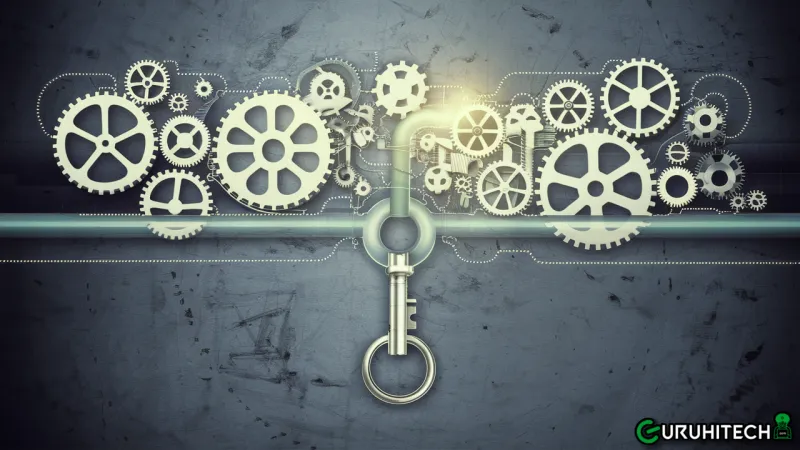Unlocking Efficiency and Integration: Understanding Enterprise Resource Planning

In today’s fast-paced business environment, companies strive for efficiency, agility, and seamless integration across their operations. One solution that has emerged as a cornerstone for achieving these objectives is Enterprise Resource Planning (ERP) systems. ERP is a sophisticated software suite designed to streamline and integrate a company’s core business processes, ranging from finance and human resources to supply chain management and customer relationship management (CRM). This article explores the fundamentals of ERP systems, their benefits, challenges, and future trends.
Understanding ERP:
At its core, an ERP system serves as a centralized hub that consolidates data and processes across various departments within an organization. Traditional business functions, such as accounting, procurement, manufacturing, sales, and distribution, are interconnected through a single integrated platform. This integration eliminates data silos, enhances communication, and provides real-time visibility into operations, enabling informed decision-making at all levels.
Key Components of ERP:
1. Finance and Accounting:
ERP systems offer modules for managing financial transactions, budgeting, general ledger, accounts payable/receivable, and financial reporting. This ensures accuracy, compliance, and transparency in financial operations.
2. Supply Chain Management (SCM):
SCM modules optimize procurement, inventory management, demand forecasting, and logistics to streamline the flow of goods and materials from suppliers to customers, reducing costs and enhancing responsiveness.
3. Human Resources (HR):
HR modules cover employee management, payroll, benefits administration, performance evaluation, and workforce planning, facilitating efficient workforce management and talent development.
4. Manufacturing:
Manufacturing modules automate production planning, scheduling, quality control, and shop floor operations, improving production efficiency, quality, and responsiveness to market demands.
5. Sales and CRM:
ERP systems incorporate CRM functionality to manage customer interactions, sales pipelines, marketing campaigns, and service delivery, fostering customer satisfaction and loyalty.

Benefits of ERP:
1. Operational Efficiency:
By streamlining processes and eliminating redundant tasks, ERP systems enhance operational efficiency, reducing lead times and increasing productivity.
2. Data Visibility and Insight:
ERP provides real-time access to accurate data and analytics, empowering decision-makers with actionable insights to drive performance improvements and strategic initiatives.
3. Standardization and Compliance:
ERP enforces standardized processes and controls, ensuring regulatory compliance, data integrity, and consistency across the organization.
4. Improved Collaboration:
ERP facilitates cross-functional collaboration by breaking down departmental barriers and fostering communication and collaboration among teams.
5. Scalability and Flexibility:
ERP systems are scalable and adaptable to accommodate evolving business needs, whether expanding operations, entering new markets, or integrating acquisitions.
Challenges and Considerations:
While ERP systems offer numerous benefits, their implementation can present challenges, including:
1. Cost and Complexity:
ERP implementations require significant investment in terms of software licenses, customization, training, and ongoing maintenance. The complexity of integration across disparate systems and business units can also pose challenges.
2. Change Management:
ERP implementations often entail organizational changes, including process redesign and workforce retraining. Resistance to change and cultural barriers may impede successful adoption.
3. Data Migration and Quality:
Migrating data from legacy systems to ERP platforms and ensuring data accuracy and consistency are critical yet complex tasks that require careful planning and execution.
4. Vendor Selection and Customization:
Choosing the right ERP vendor and solution that aligns with business requirements is essential. Balancing the need for customization with the risk of complexity and cost overruns is a key consideration.
5. Security and Compliance:
Protecting sensitive data and ensuring compliance with data privacy regulations are paramount concerns in ERP implementations, necessitating robust security measures and governance frameworks.
Future Trends in ERP:
As technology evolves and business dynamics continue to change, several trends are shaping the future of ERP:
1. Cloud-Based ERP:
The shift towards cloud-based ERP solutions offers scalability, flexibility, and cost-effectiveness, enabling organizations to access advanced capabilities without heavy upfront investments in infrastructure.
2. AI and Machine Learning:
Integration of artificial intelligence (AI) and machine learning (ML) capabilities into ERP systems enhances automation, predictive analytics, and decision support, driving operational efficiencies and innovation.
3. Internet of Things (IoT) Integration:
IoT sensors and devices are increasingly integrated with ERP systems to enable real-time monitoring of assets, equipment, and supply chains, optimizing resource utilization and predictive maintenance.
4. Blockchain for Supply Chain Transparency:
Blockchain technology is being explored to enhance supply chain visibility, traceability, and trust by securely recording and verifying transactions across distributed networks.
5. Enhanced User Experience:
Modern ERP systems focus on intuitive user interfaces, mobile accessibility, and personalized experiences to enhance user adoption and productivity.
Conclusion
In conclusion, Enterprise Resource Planning (ERP) systems play a pivotal role in helping organizations streamline operations, enhance collaboration, and drive competitive advantage in today’s dynamic business landscape. While ERP implementations present challenges, the benefits of improved efficiency, integration, and insight far outweigh the risks. By embracing emerging trends and best practices, companies can leverage ERP as a strategic enabler for growth and innovation.
Ti potrebbe interessare:
Segui guruhitech su:
- Google News: bit.ly/gurugooglenews
- Telegram: t.me/guruhitech
- X (Twitter): x.com/guruhitech1
- Bluesky: bsky.app/profile/guruhitech.bsky.social
- GETTR: gettr.com/user/guruhitech
- Rumble: rumble.com/user/guruhitech
- VKontakte: vk.com/guruhitech
- MeWe: mewe.com/i/guruhitech
- Skype: live:.cid.d4cf3836b772da8a
- WhatsApp: bit.ly/whatsappguruhitech
Esprimi il tuo parere!
Ti è piaciuto questo articolo? Lascia un commento nell’apposita sezione che trovi più in basso e se ti va, iscriviti alla newsletter.
Per qualsiasi domanda, informazione o assistenza nel mondo della tecnologia, puoi inviare una email all’indirizzo [email protected].
Scopri di più da GuruHiTech
Abbonati per ricevere gli ultimi articoli inviati alla tua e-mail.
